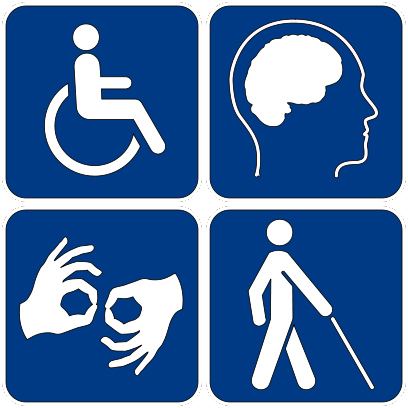 I may need help with this course. What do I do? If you need special accommodations in this course, please let me know, and I will try to provide what you need.
I may need help with this course. What do I do? If you need special accommodations in this course, please let me know, and I will try to provide what you need.
Is there more information about accessibility? Yes. Please see the Classroom Access & Support Guide (still a working draft) for additional information. I have included everything I know about access in this course in the guide.
How do I document what will help me? To document the special accommodations that will help you the most, please contact Services for Students with Disabilities (SSD) in 310 Lavery Hall (above the Turner Place Dining Center) as soon as possible to ensure that you have the resources you need to participate in the class. The procedures and forms you need are also available on the SSD website.
I am happy to work with you and the SSD staff to make sure that you have the support you need. Documentation from the SSD office should be sent to me by the end of the first week of class if possible so that I can ensure you have the materials you need. If not possible, send the information as soon as you can.
What if I do not have official documentation? That’s okay too. I know that the official testing can be expensive and time-consuming. Send me an email or a message in Canvas that tells me what you need, and I will try to help.
Course Resources
What resources are designed for accessibility?
- I test the course site with WebAIM’s Web Accessibility Evaluation Tool (WAVE).
- Most resources we use can be magnified on your computer screen if the font is too small.
- The pages of the website text are readable by a screen reader.
- There are toggle buttons in the right sidebar on this course that allow you to change this site to a high contrast color scheme and to change to a larger font size.
- All the Lynda.com videos we use have an accompanying text transcript.
- Images on the course website should all have descriptive alt attributes (unless they are purely decorative).
- Most links on the course website have title attributes if the page title differs from the linked text.
- Canvas is accessible by screen readers.
- Facebook has a complete explanation of Accessibility for People with Disabilities available.
What resources may be inaccessible? Student projects used as examples may not be fully accessible. For instance, there may not be captions or alt attributes for the images in student work.
Some infographics may not have an accompanying text description. (I’m currently working to create descriptions where they are missing.)
I need extra time on projects. You can use the grace period if you need more time on a project or need to complete in-class work in a less distracting environment. Check the late policy for more details. If the grace period is not adequate for your situation, email me as far in advance as possible so I can fix the settings in Canvas for you.
[Image Credit for Accessibility Signs: By Disability_symbols_16.png: NPS Graphics, put together by User:Wcommons Pictograms-nps-accessibility-wheelchair-accessible.svg: NPS Graphics, converted by User:ZyMOS Pictograms-nps-accessibility-low_vision_access.svg: NPS Graphics, converted by User:ZyMOS Pictograms-nps-accessibility-sign_language_interpretation.svg: NPS Graphics, converted by User:ZyMOS Autismbrain.jpg: National Institutes of Mental Health, National Institutes of Health derivative work: Hamiltonham [Public domain], via Wikimedia Commons.]